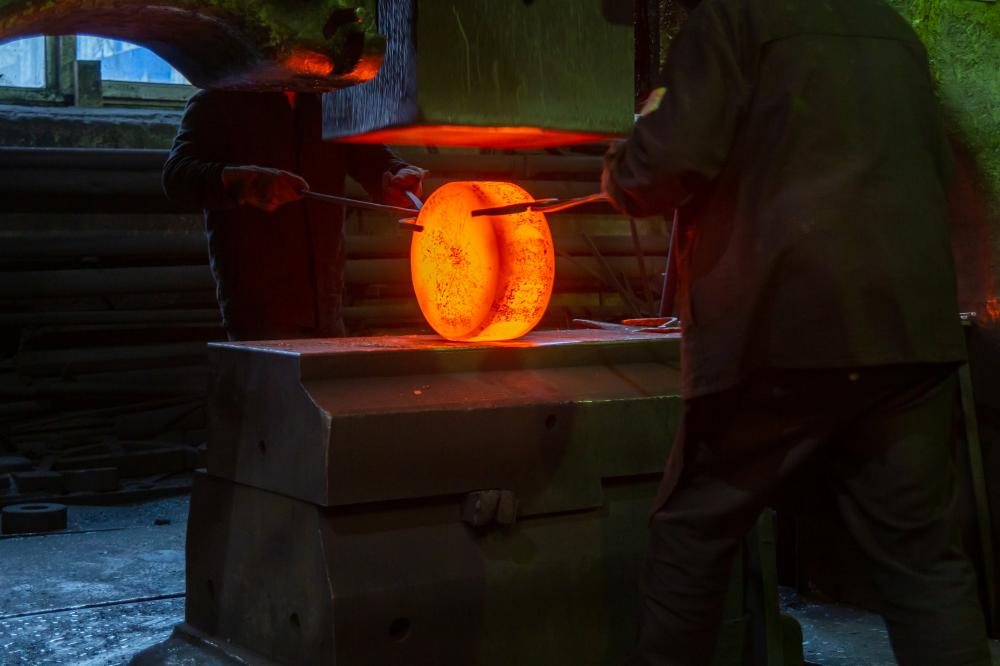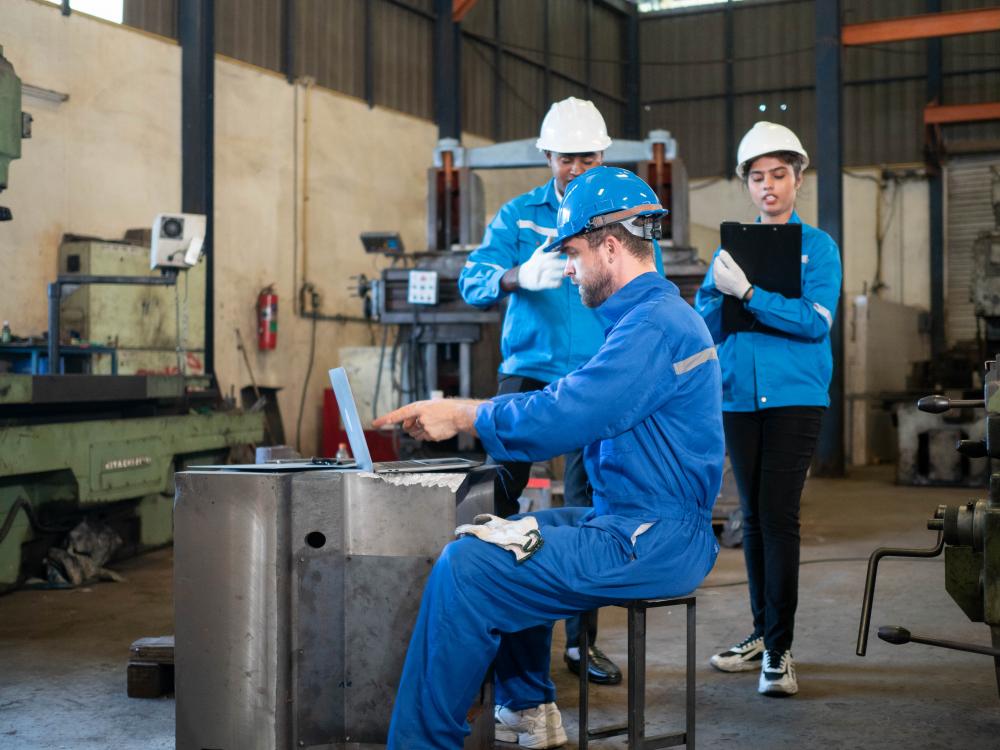
The Essentials of a Biomass Burner
Biomass burners represent a pivotal shift towards more sustainable energy solutions. By converting organic materials
into heat, these systems offer an environmentally friendly alternative to fossil fuels. The core of a biomass burner
system lies in its ability to process various forms of biomass, such as wood chips, pellets, and agricultural waste,
transforming them into a reliable source of energy. This process not only contributes to waste reduction but also to
the circular economy by utilizing materials that would otherwise be considered waste.
At Player Design Inc. (PDI), the drive towards innovative engineering solutions for biomass burner systems is
evident. These systems are designed with efficiency, sustainability, and the client’s specific needs in mind.
Utilizing advanced technology and engineering practices, PDI crafts biomass burners that are not just machines but
solutions to the pressing environmental issues of waste and non-renewable energy sources.
Technical Innovations in Biomass Burners
Advanced Engineering Approaches
The design of a biomass burner is a complex task that requires a deep understanding of thermal dynamics, material
science, and ecological impacts. The technology behind these systems has evolved significantly, incorporating
automated feeding systems, sophisticated combustion chambers, and emissions control technologies. These innovations
ensure that the biomass burner operates at peak efficiency while minimizing the release of harmful pollutants.
Patented Technology and Sustainability
PDI stands at the forefront of this innovation, holding patents that represent significant advancements in biomass
burner technology. These patents cover a range of techniques and technologies designed to enhance the efficiency,
reliability, and environmental performance of biomass burners. By focusing on sustainability, PDI’s patented
solutions aim to make biomass burners a cornerstone of renewable energy strategies for industries across the globe.
Real-World Applications of Biomass Burners
The versatility of biomass burners allows them to be used in a variety of settings, from industrial applications to
heating solutions for communities. PDI has successfully implemented biomass burners in sectors such as lumber, wood
pellets, and even food processing, showcasing the adaptability of this technology. These real-world applications
demonstrate how biomass burners can be integrated into existing systems to provide a sustainable and cost-effective
energy solution.
In the lumber industry, for example, biomass burners utilize wood waste, converting it into energy for kilns and
other heating needs. This not only reduces waste but also decreases reliance on non-renewable energy sources.
Similarly, in the food processing industry, biomass burners can use agricultural waste to generate heat, thereby
closing the loop and contributing to a more sustainable production cycle.
Environmental Impact of Biomass Burners
Reducing Carbon Footprint
The shift towards biomass burners is motivated by the urgent need to reduce carbon footprints and combat climate
change. By utilizing renewable resources, biomass burners play a critical role in decreasing the amount of carbon
dioxide released into the atmosphere compared to fossil fuels. PDI’s commitment to engineering solutions that
prioritize the environment is evident in their development of biomass burners designed to meet the most stringent
environmental guidelines.
Sustainability and Renewability
Another significant aspect of the environmental impact of biomass burners is their contribution to sustainability
and renewability. Biomass, as a fuel source, is replenished over time through natural processes, unlike fossil fuels
which are finite and contribute to environmental degradation. PDI’s approach to biomass burner technology
embraces this renewable aspect, ensuring that their systems not only provide immediate energy solutions but also
contribute to a sustainable future.
Challenges and Solutions
While biomass burners present a promising pathway towards renewable energy, they also come with their set of
challenges. One of the primary obstacles is the variability in biomass fuel quality, which can affect the efficiency
and emissions of the burner. PDI addresses this challenge through innovative engineering, designing systems that can
adapt to different fuel qualities and maintain high efficiency and low emissions.
Another challenge lies in the integration of biomass burners into existing energy systems. PDI’s approach
involves a comprehensive analysis of the client’s needs and existing infrastructure, followed by the design and
implementation of a biomass burner system that complements and enhances the overall energy solution.
Looking Towards the Future
The future of biomass burners is bright, thanks to ongoing technological advancements and a growing recognition of
the need for sustainable energy solutions. PDI is at the helm of this journey, continually pushing the boundaries of
what is possible in biomass burner technology. With a focus on innovation, sustainability, and client-specific
solutions, PDI is not just engineering biomass burners; they are engineering a cleaner, more sustainable future.
In conclusion, the biomass burner represents a critical component in the transition towards more sustainable energy
systems. Through the dedicated efforts of organizations like Player Design Inc., the potential of biomass as a
renewable energy source is being fully realized, offering a viable and environmentally friendly alternative to
fossil fuels. As we look towards the future, the role of biomass burners in global energy strategies is set to grow,
marking an important step in our collective journey towards sustainability.

What does a Biomass Burner do?
At its core, a biomass burner transforms organic material into heat. It’s an ingenious way of taking
what’s essentially waste–like wood chips, agricultural leftovers, or pellets–and turning it into
a valuable resource. This process not only offers an alternative to fossil fuels but also contributes to waste
reduction and supports a circular economy. Imagine, for a moment, the vast amounts of agricultural waste
generated yearly. Now picture that instead of lying unused, this waste powers industrial furnaces or home
heating systems. That’s the transformative power of biomass burner technology in action.
What is the efficiency of a Biomass Burner?
Biomass burners have come a long way in terms of efficiency. The latest systems, particularly those engineered
with advanced technology like automated feeding and sophisticated combustion chambers, are designed to extract
maximum energy from biomass. As a ballpark figure, modern biomass systems can achieve efficiency rates upwards
of 80%. However, it’s crucial to remember that efficiency can vary based on the type of biomass used and the
specific design of the burner. This means that custom solutions, tailored to the unique needs and materials at
hand, often yield the best results. Have you ever wondered how changes in material quality could affect your
energy output? That’s where the expertise of experienced engineers comes into play, ensuring your system
runs at peak performance.
Is a pellet stove a Biomass Burner?
Absolutely, pellet stoves are a type of biomass burner. They use compressed wood or biomass pellets as fuel to
generate heat. What’s fascinating about pellet stoves is their efficiency and convenience. Because the
pellets are uniform in size and composition, they burn more consistently than, say, logs. This not only makes
them more user-friendly but often more efficient as well. So, if you’re considering a sustainable heating
solution for your home, a pellet stove is definitely an option worth exploring. It’s a small-scale testament
to the broader potential of biomass energy.
What is the output of a Biomass Burner?
The output of a biomass burner can vary significantly based on the system’s size, design, and the type of
biomass fuel used. In an industrial setting, these systems can produce enough energy to power large-scale
operations, such as heating for manufacturing processes or electricity generation. On a smaller scale,
residential biomass boilers can output sufficient heat to warm a home. The beauty of biomass burner technology
is its scalability, making it a versatile solution for various applications. When considering a biomass burner,
it’s essential to discuss your specific needs with a provider who can design a system tailored to your
requirements, ensuring optimal performance.
What are the Environmental Benefits of Using a Biomass Burner?
Using a biomass burner comes with a slew of environmental benefits. Primarily, it reduces reliance on fossil
fuels, thereby decreasing greenhouse gas emissions. Imagine replacing coal or natural gas with something that
grows back–like wood pellets or agricultural waste. This switch not only curbs carbon emissions but also
capitalizes on renewable resources that would otherwise go to waste. Moreover, because biomass is part of the
carbon cycle, using it for energy can be carbon neutral, especially when managed sustainably. This is a key
driver behind the push for more biomass energy solutions in industries looking to reduce their carbon footprint
and contribute to a more sustainable future.
How Does Biomass Energy Contribute to Sustainability?
Biomass energy contributes to sustainability in several key ways. It’s a renewable resource, meaning it can
be replenished naturally over time, unlike fossil fuels, which are finite. Furthermore, the use of biomass for
energy can help promote a circular economy. By utilizing waste materials from agricultural or forestry
operations, biomass burners can reduce overall waste and enhance sustainability efforts. Think of it as turning
what would be discarded into a valuable energy source. Moreover, sustainable biomass energy projects can also
support local economies by creating demand for biomass materials, which can provide an additional income stream
for farmers and foresters. Thus, embracing biomass energy is not just about finding alternatives to fossil
fuels; it’s about reshaping our economic and environmental landscapes towards a more sustainable and
interconnected future.
What are the Challenges Associated with Biomass Burners?
While biomass burners offer numerous benefits, they also come with their set of challenges. One of the main
issues is the variability in biomass fuel quality, which can impact both efficiency and emissions. Different
materials burn differently, and achieving consistent performance requires sophisticated technology and know-how.
Furthermore, integrating biomass burners into existing energy systems can pose logistical and technical
challenges that require custom solutions. But it’s precisely these challenges that drive innovation in the
field. By tackling these hurdles head-on, companies like PDI are not just solving technical problems;
they’re paving the way for a more sustainable and efficient energy future. Have you ever encountered a
seemingly insurmountable challenge, only to find that overcoming it opened up new possibilities? That’s the
essence of innovation in the biomass energy sector.
Resources
-
U.S. Department of
Energy – Biomass Basics: This DOE page offers an overview of biomass basics, including types of biomass
and conversion technologies.